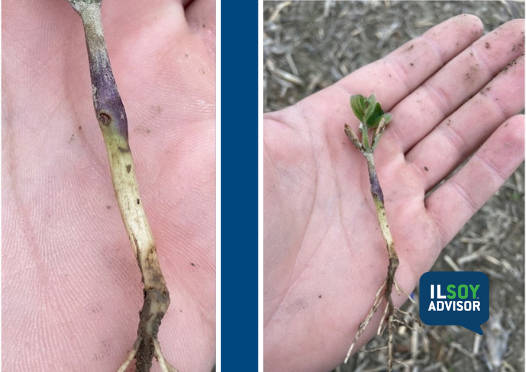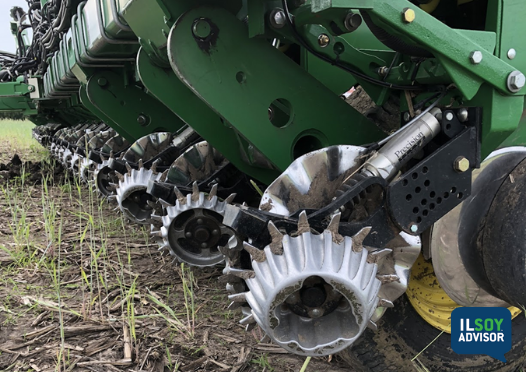ILSOYADVISOR POST
Top 5 Reasons to Reduce Your Soybean Populations
Original article posted on the Burrus Buzz.
Seeding rate, actual plant population, and row spacing are all tied together. In the past, a higher soybean population was used for faster canopy to intercept light and reduce weed competition. With greater use of residual herbicides, increased populations to aid in weed control is no longer needed. With higher seeding rates, soybeans can increase in height and produce pods higher off the ground, which could reduce harvest loss from lower branch lodging. However, disadvantages of higher planting populations are much more numerous and include lodging, plant competition, increased disease pressure, as well as an overall decrease of branches, pods, seeds and therefore yield per acre:
5. Lodging
There are many factors that increase the likelihood of soybean lodging, including genetics, higher fertility/productivity environments, and early planting. However, higher plant populations is another factor that can cause soybean lodging. If lodging occurs at the beginning of seedfill, yields will suffer. For example, if you attempt to “fill in” areas to increase stand, you could also be increasing chances of lodging and other disadvantages if final stands become too thick.
4. Plant Competition
An increase in plant population per acre can cause competition for water, nutrients, and stress. With fewer plants, each plant can increase leaf area, capture more sunlight, and allow for more branching and pods, all things that boost yields. With optimum plant density, the appropriate number of pods and seeds can occur, dependent on variety and environment. Weeds can also compete with the soybean crop, lengthening time between vegetative stages or shortening time between reproductive stages.
3. Disease
In order for a disease to occur, you need a pathogen, a susceptible host, and a favorable environment. Soybean varieties differ in disease susceptibility however, increased population could create a more favorable environment for some diseases. An excessive amount of plants can cause more humidity within the canopy, creating a favorable environment for diseases such as white mold and leaf diseases. Increased populations could also cause plants to compete, be stressed, and become more susceptible to a disease like charcoal rot. Another example of a disease that could thrive at greater populations is stem canker.
2. Early Planting
Early planting of a later maturity (mid-April until May 1st) at 120,000 to 130,000 plants per acre, with a uniform final stand of around 105,000 plants per acre, lays the foundation for greater yields. By doing this, the goal is to achieve efficient interception of the maximum amount of light early when it is needed at the R2 growth stage for more nodes and pods. By planting early, there are more days to grow before the longest days of the year, which increases light interception and can lead to higher yields. Growing soybeans is a systems approach with many complex interactions of soil conditions, variety selection, weather, and management.
1. Optimize Your Return with Seed Treatments
Most importantly, by investing in high quality seed with treatments like PowerShield® SDS, research has shown you can reduce your planting population. This protects your seed investment when planting early. Reducing seeding rate can be a very important management decision because of increasing seed costs. Seed treatment results in greater emergence and a more uniform stand. Ultimately, an optimal plant population for soybean production increases both yield and profitability.




Comments
Add new comment